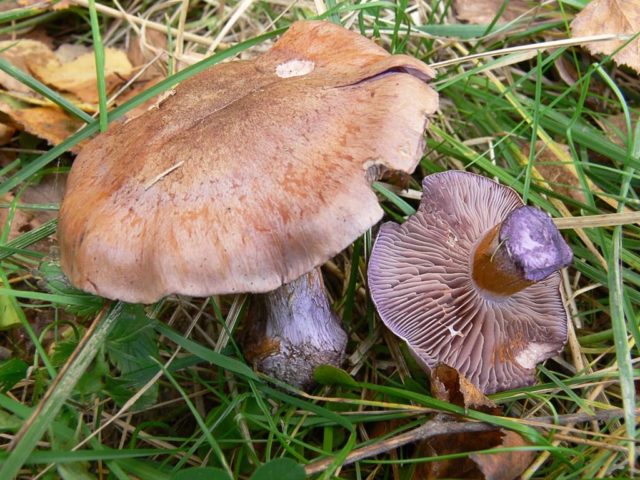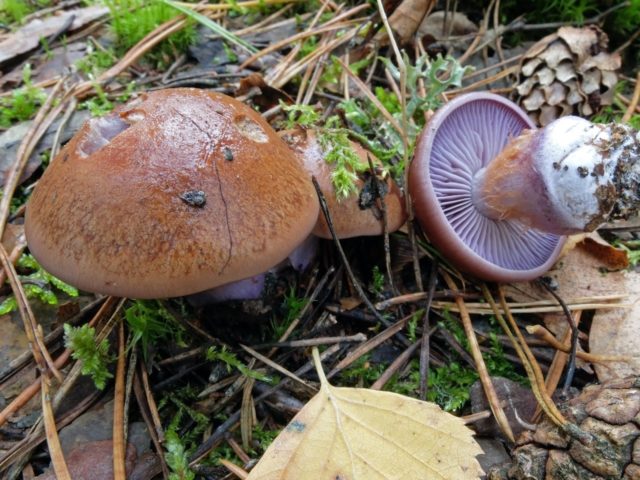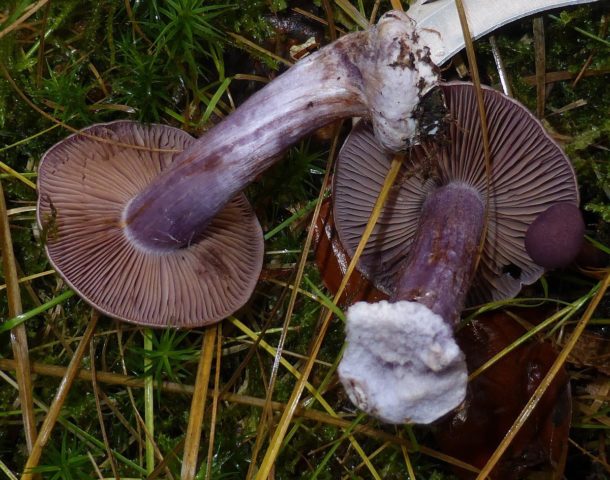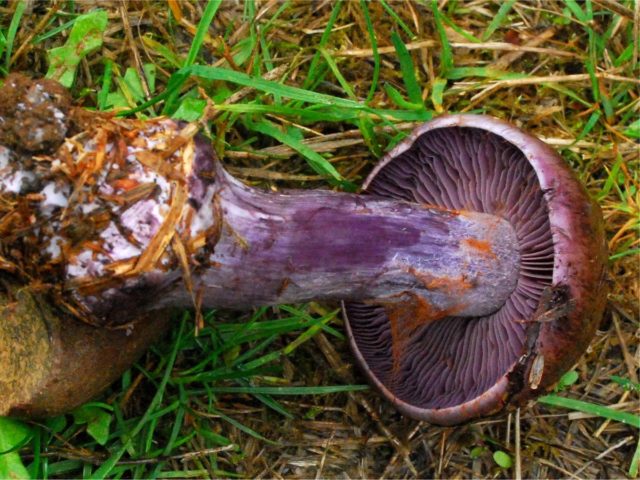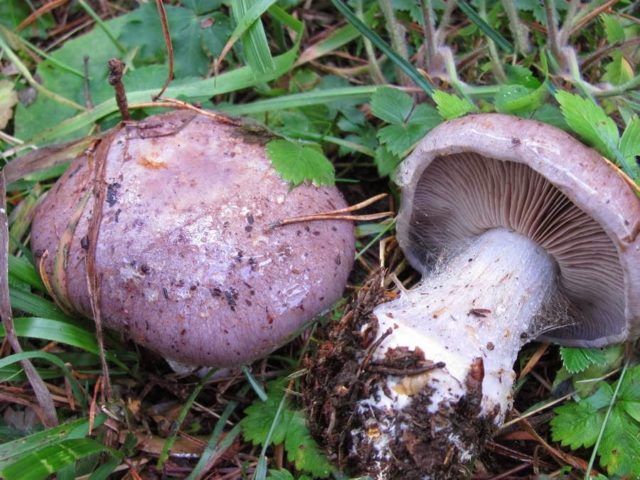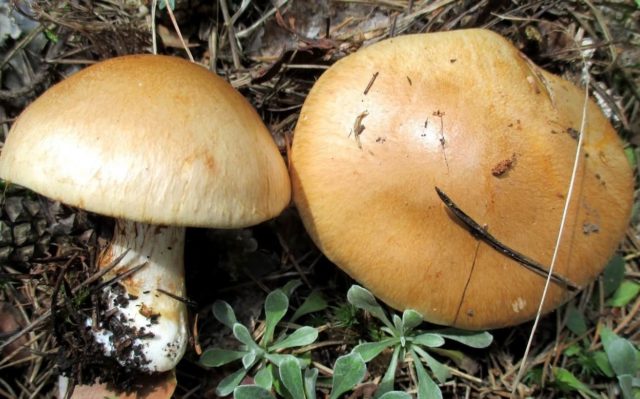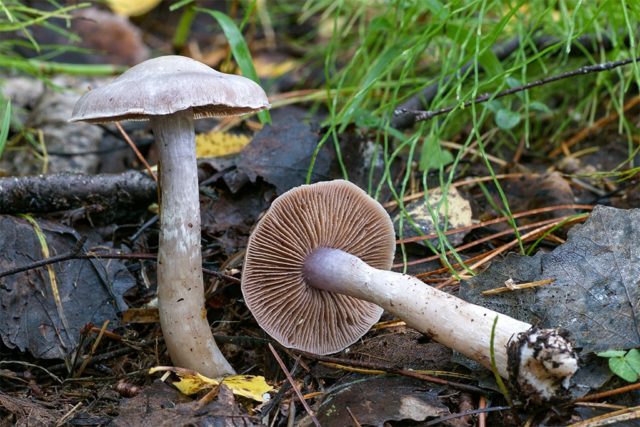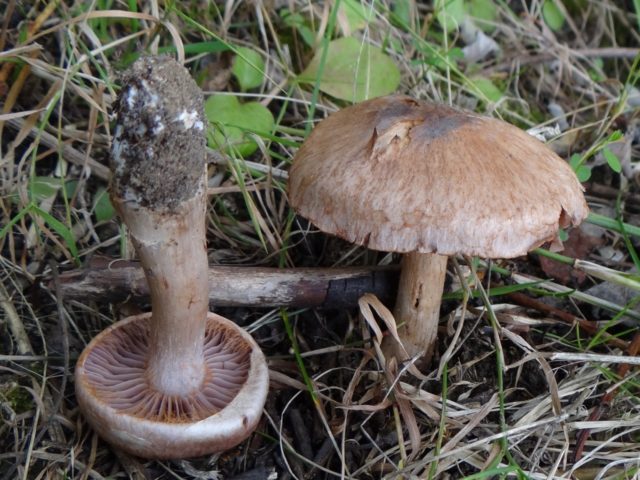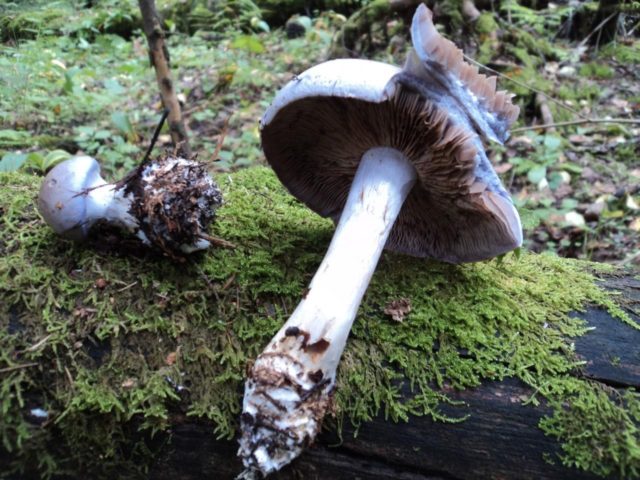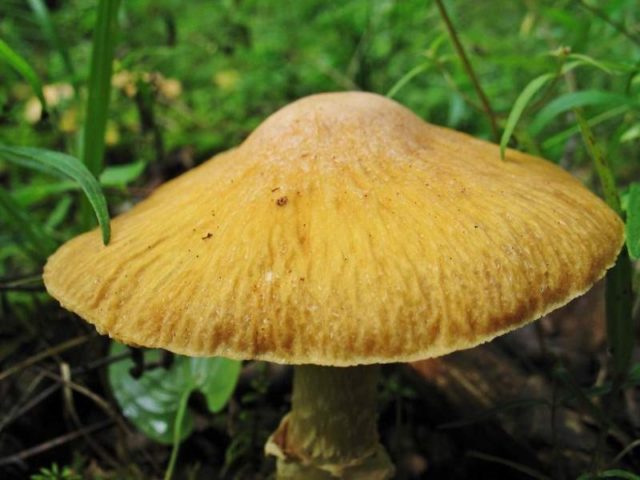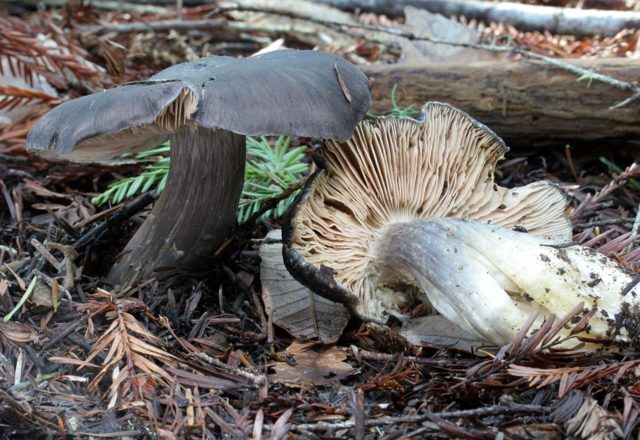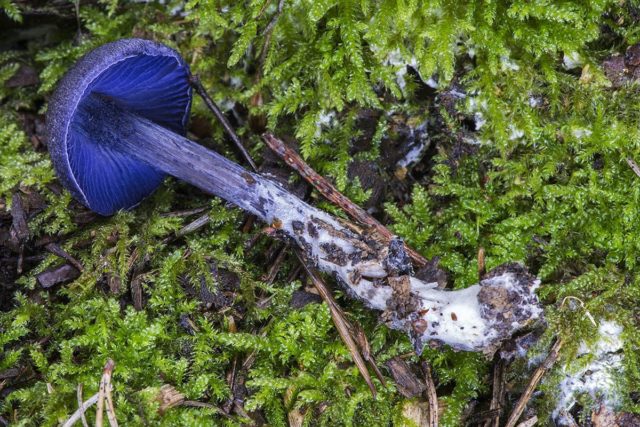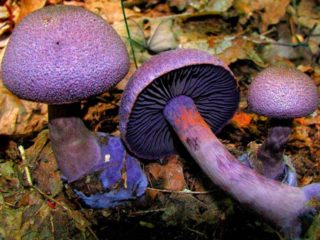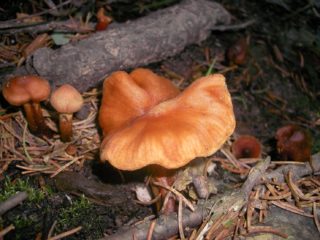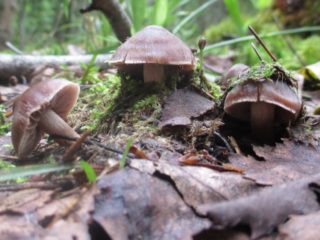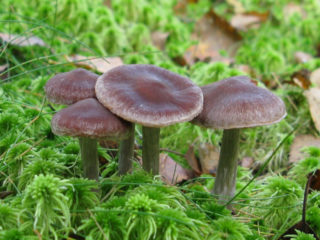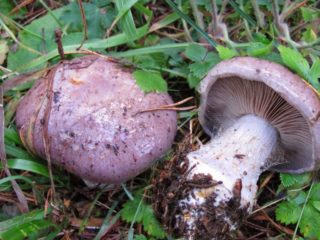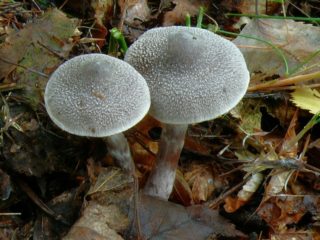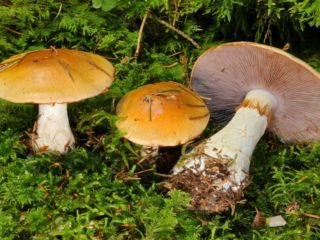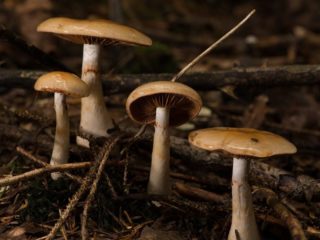Content
Purple cobweb mushroom (Cortinarius purpurascens) is a large lamellar mushroom belonging to the extensive family and genus of Cobweb mushrooms. The genus was first classified at the beginning of the 19th century by E. Fries. In the middle of the 20th century, changes were made to the adopted system by Moser and Singer, and this classification is still relevant today. Mushrooms of the genus Cobwebs love damp, swampy lowlands, which is why they received the popular nickname “marshweed”.
What does the purple web spider look like?
The purple cobweb is very attractive in appearance. The identity of young specimens can be easily determined by the presence of a veil that tightly covers the plates. But only a very experienced mushroom picker or mycologist can distinguish old mushrooms.
Like other mushrooms of the family, the purple cobweb received its name because of its peculiar cover. It is not filmy, like other fruiting bodies, but veil-shaped, as if woven by spiders, connecting the edges of the cap with the base of the stem.
Description of the cap
The purple cobweb has a fleshy, smooth cap. In young fruiting bodies it is conical-spherical, with a rounded apex. As the cap grows, it straightens, breaking the threads of the bedspread. It first becomes spherical and then spread out, like an umbrella, with the edges slightly curling inward. The diameter ranges from 3 to 13 cm. Particularly large specimens can reach 17 cm.
The color palette is very extensive: silver-brown, olive-gray, reddish, light brown, walnut-spotted, rich burgundy. The top is usually a little darker, the color is uneven, with spots and stripes. The surface is slimy, shiny, slightly sticky, especially after rain. The pulp is highly fibrous and rubbery. It has a bluish-gray tint.
The plates are neat, adherent to the leg. Often located, smooth, without notches. Initially they have a silvery-purple or light purple hue, gradually darkening to a reddish-brown or brownish color. The spores are almond-shaped, warty, rusty-brown in color.
Description of the leg
The purple cobweb has a fleshy, strong leg. In a young mushroom, it is thickened and barrel-shaped; as it grows, it stretches out, acquiring an even cylindrical shape with a thickening at the root. The surface is smooth, with barely noticeable longitudinal fibers.The color can be varied: from rich lilac and purple, to silver-violet and light reddish. The downy red-rusty remains of the bedspread are clearly visible. There is also a white velvety coating.
The consistency of the cobweb is dense and fibrous. The diameter of the leg is from 1.5 to 3 cm, and the length is from 4 to 15 cm.
Where and how does it grow
Purple cobweb grows in small groups, 2-4 closely spaced specimens, singly. It is not common, but is found everywhere in the temperate climate zone. In Russia, its habitat is vast - from Kamchatka to the western border, excluding the permafrost zone, and to the southern regions. It is also found in neighboring Mongolia and Kazakhstan. Quite often found in Europe: Switzerland, Czech Republic, Germany, Great Britain, Austria, Denmark, Finland, Romania, Poland, Czechoslovakia. It can be seen overseas, in the northern United States and Canada.
The mycelium begins to bear fruit in the fall, from the twentieth of August to the beginning of October. The scarlet web spider loves damp places - swamps, ravines, gullies. It is not picky about soil composition and grows in both pure coniferous or deciduous forests and mixed forests.
Is the mushroom edible or not?
Purple cobweb belongs to the category of inedible mushrooms. There is no exact information about poisonous or toxic substances in its composition; no cases of poisoning have been registered. The pulp has a sweetish-mushroom smell, is fibrous and completely tasteless. Due to its low taste and specific consistency, the fruit body has no nutritional value.
Doubles and their differences
The scarlet webwort is very similar to some representatives of its own species, as well as the Entoloma variety. Due to the similarity of external signs with their deadly poisonous counterparts, collecting and eating spider webs is not recommended. Often, even experienced mushroom pickers are not able to accurately identify the species of the found specimen.
Cobweb watery blue. Edible. It is distinguished by a rich bluish-ocher shade of the cap and a lighter, heavily pubescent leg. The pulp has an unpleasant odor.
Thick-fleshy cobweb (Fat)). Edible. The main difference is the gray-yellowish color of the stem and the grayish flesh, which does not change color when pressed.
White-violet cobweb. Inedible. It is distinguished by the shape of its cap with a distinct outgrowth in the center, smaller size and longer stem. It has a delicate silver-lilac tint over the entire surface. The plates are dirty brown in color.
Anomalous cobweb. Inedible. The color of the cap is grayish-brown, turning red with age. The leg is light gray or sandy red, with distinct remains of the spathe.
Camphor cobweb. Inedible. It has an extremely unpleasant odor, reminiscent of rotten potatoes. The color is soft purple, even. The plates are dirty brown in color.
Goat's web spider (traganus, stinking). Inedible, toxic. The color of the cap and stem is soft purple with a silver tint. It is distinguished by the rusty color of the plates of an adult mushroom and a rich, unpleasant odor that intensifies during heat treatment.
Ringed cap. Edible, has excellent taste. It is distinguished by a light stem and white-cream plates. The pulp does not change color when pressed.
Entoloma poisonous. Deadly.The main difference is the creamy-gray plates and gray-brown leg. The cap can be bluish, light gray or brown. The pulp is white, dense, with an unpleasant, rancid, mealy odor.
Entoloma brightly colored. Non-toxic, considered a conditionally edible mushroom. It is not recommended to collect it, as it can easily be confused with similar poisonous species. It is distinguished by a bluish color over the entire surface, the same pulp and smaller sizes - 2-4 cm.
Conclusion
The scarlet cobweb is a representative of the extensive family of Cobwebs; it is quite rare. Its habitat is Western and Eastern Europe, North America, Russia, the Middle and Far East. Loves damp areas of deciduous and coniferous forests, where it grows singly or in small groups. Due to its low nutritional qualities, it is classified as inedible mushrooms. It has poisonous counterparts, so it should be treated with caution. The scarlet cobweb can be distinguished from similar counterparts due to the property of the pulp to change its color from gray-blue to purple when pressed or cut.
